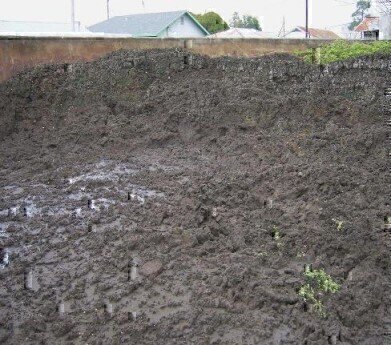Water/Wastewater
Bio-augmentation process reduces odours and organic sludge build-up
Apr 24 2009
Efficiently operating a wastewater treatment plant within budget and permit limits gets more challenging by the day! Plant administrators are constantly facing the battle of costly sludge disposal, noxious odor control and rising electricity expense. The City of Meridian, Mississippi also fell into this category until it made the decision in 2005 to utilize a product marketed by Reliant Water Technologies (USA). Sewper Rx isa patented biotechnology process designed to greatly reduce noxious odor, organic sludge build-up and power consumption, while improving settling and effluent quality.
Meridian’s Main Treatment Plant is a standard, activated sludge design that is permitted for approximately 13 MGD and is operating at about 10 MGD. Its much newer and smaller East Treatment Plant is designed for 2.5 MGD, permitted for 1MGD and currently operates at about 50% of permit limit. The East Plant presented the ideal situation to run an initial trial of Sewper Rx. In late July of 2005, City of Meridian officials agreed to field test Sewper Rx in their smaller East Plant. The goals of the demonstration were significant organic sludge reduction coupled with noxious odor control. Historically, this plant generated 35 tons of pressed sludge per month. So the 350,000 gallon aerated digester was initially treated with 200 lbs. of Sewper Rx in order to meet those goals. Within 30 days of the initial Sewper Rx introduction, the reduction in organic waste in the digester made it possible for the plant operator to suspend pressing sludge altogether. The digester was now capable of accepting all of the solids from the SBR without the need to press and haul sludge from the plant on a monthly basis. The press remained idle for 15 months and during that time the volatile suspended solids (VSS) remained flat at approximately 10,000mg/l. Result - Sewper Rx consumed 95% of the incoming organics month after month! Over the 15 months, with Sewper Rx being added to the plant on a regular basis, total suspended solids (TSS) in the digester (organic and inorganic combined) gradually rose from the normal 10,000 mg/l to 20,000 mg/l. With VSS remaining flat at approximately 10,000 mg/l, the increase in TSS over the 15-month period was almost all inorganic sludge. Because the plant administrator prefers not to operate the digester at TSS levels above 20,000 mg/l, beginning in October 2006, the belt press was operated intermittently over the next six months as trailers became available at the East Plant to haul sludge to the landfill. For plant applications where sludge disposal may take place only once or twice per year or less, like East Meridian, Reliant Water Technologies recommends opening the digester supernatant line from the digester to the liquid or centrate drain in the solids separation area for a few minutes at least monthly to avoid line clogging. In April of 2007, when intermittent pressing had reduced TSS to approximately 9,000 mg/l, the sludge disposal process was again discontinued and, with intervening Sewper Rx treatments, the press was inactive and no sludge was removed from the plant for the next 22 months! During that period, TSS again gradually rose from 9,000 mg/l to 20,000 mg/l as before, while VSS averaged about 9,000 mg/l throughout the period. The East Plant will begin pressing again in January 2009 and will continue until the TSS is back in the 10,000 mg/l range. The process of not pressing sludge will then recommence. So what are the cumulative results over the 42-month period of Sewper Rx treatments? At its former, normal sludge disposal rate of 35 dry tons per month, the East Plant would have generated 1470 dry tons of sludge during this time. But the actual tonnage pressed and hauled to the land fill amounted to183 dry tons, which is an 87% reduction in sludge accumulation and disposal! In addition to the savings in reduced sludge handling costs, noxious odor is also under control and additional savings were achieved through reducing the operation time of the digester aeration blower. City officials are pleased with the performance of Sewper Rx and the savings it has provided them in sludge disposal costs, equipment utilization, odor reduction and labor.Events
May 05 2024 Seville, Spain
May 13 2024 Munich, Germany
May 23 2024 Beijing, China
May 23 2024 Beijing, China
Jun 10 2024 Algiers, Algeria













